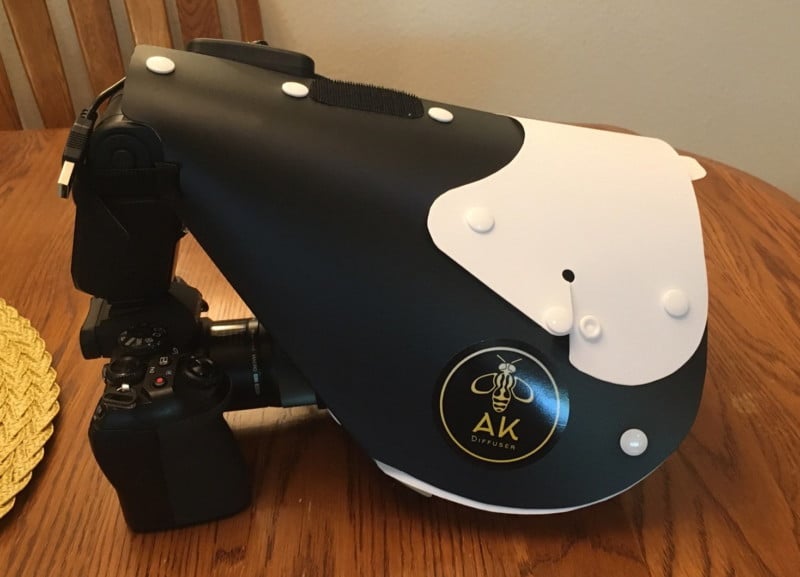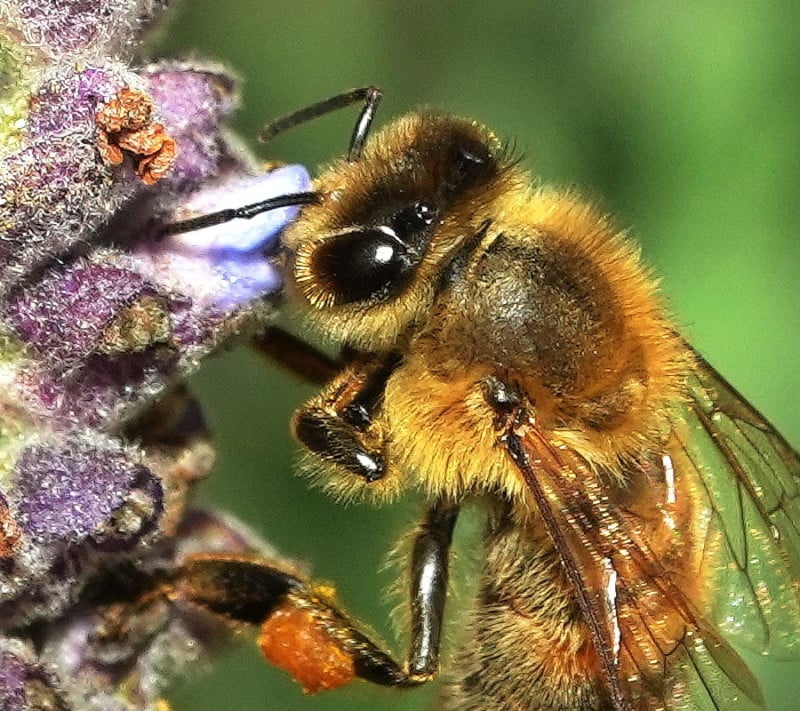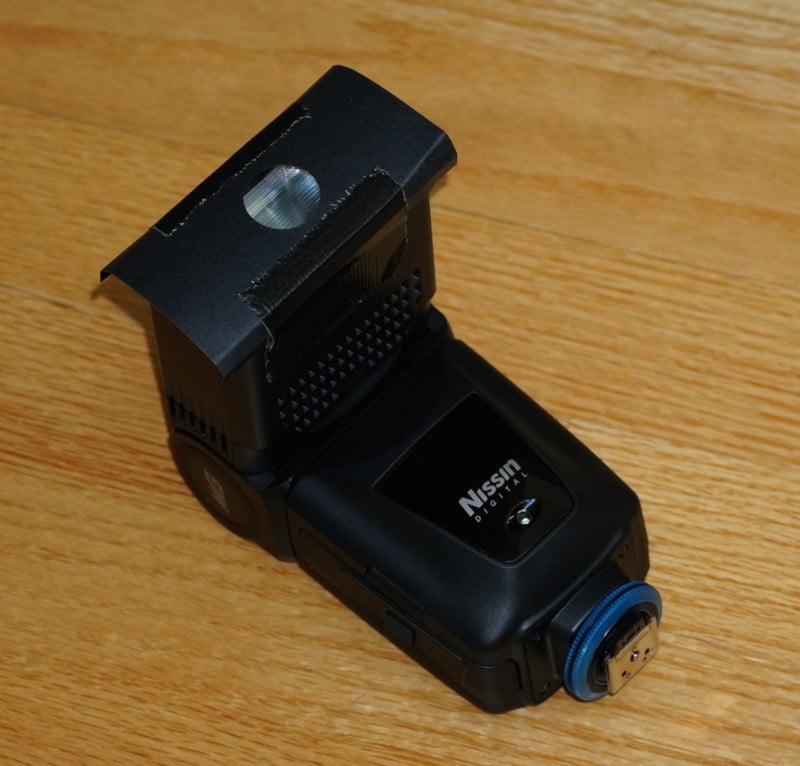Using a Flash for Insect Photography
![]()
I’ve shot thousands of pics of insects without flash and tens of thousands with flash. When the lighting is bright and sunny, the results can be good without flash. But when I venture out in pursuit of photo ops, I often encounter poorly lighted situations which are better with flash. If you study the work of experienced insect photographers, you’ll find that most of them use flash.
A very important advantage of flash is it captures motion. I use f/11 for depth of field and ISO 100 or less for quality. Without flash, that calls for approximately 1/100s. But flying insects are very fast and that shutter speed is too slow. So I use the fastest shutter speed possible with flash (1/250 on my Sony a7R IV and 1/400 with my Sony a1). At these settings, the ambient light contributes a fraction of what’s needed for exposure, so the remainder comes from the flash. And with a flash duration of about 1/10,000s, even the speediest flying insects are frozen sharply. It also eliminates camera shake.
![]()
When I began photographing bees, I thought the pop-up flash on my Sony a6400 would be perfect. The distance was short and low power was adequate. But there were two problems:
1. Longer lenses cast a shadow blocking the low flash head from illuminating the subject.
2. The recycle time was 4 seconds, causing me to miss opportunities while waiting for recycling (which is the charging of the capacitor in the flash).
So I tried an external flash.
My first external flash was the small Sony HVL-F32M. The light head is high enough to eliminate the lens shadow and it recycled in 2 seconds when shooting closeups. But I was still missing opportunities while waiting those 2 seconds so I sought even faster recycle time. I soon learned that flashes powered by lithium batteries recycled fastest. That reduced the number of options.
My first lithium-powered flash was a Godox 860 IIs. It offered a lot of performance for the money. But after only five months it began making a loud snapping sound each time it fired. I was advised to stop using it because that was the precursor to an exploding capacitor.
Godox had just brought out the V1s, which was about the same power. With a round head, it looks like a $1,100 Profoto. I bought it but sadly within a month the plastic foot broke. If you read user reviews on flashes, you see many complaints of broken plastic feet on many brands. Why manufacturers continue to use plastic feet is a mystery. For less than $1 they could cure the problem with a metal foot.
I ordered a warranty replacement for the V1s, and also ordered the only flash for Sony I could find with a metal foot, the $1,100 Profoto. It arrived and didn’t work at all. I emailed Profoto but they were of no help so I returned it.
Meanwhile, the replacement Godox V1s arrived and worked well for about two months until its plastic foot also broke. Argh!
Further research led me to discover the Nissin MG80 Pro, with a metal foot – YAY! The Nissin distributor sent me one to review.
![]()
Here are some comparisons of the MG80 with the Godox flashes I’ve owned.
Foot. MG80 Pro has metal foot. Having lost two Godox flashes to broken feet, I like this a lot.
Guide number The MG80 and Godox 860 have equal guide numbers (max brightness). The Godox V1s is not rated with a guide number but is probably slightly lower. At my close range, the guide number is not very important, but a high guide number suggests that I’ll be using it at a small fraction of its power and will enjoy a short recycle time.
Battery. The MG80 Pro battery capacity of 360 full power flashes is about half of the Godoxes. This is not an issue for me. My close-up flashes consume a fraction of full power. So I get over 1,000 closeup flashes on a charge. The MG80 can use four conventional AA batteries or four 14500 lithium cells. Users might appreciate this if they run out of juice while away from their home base. They could buy some AAs and keep going until they could charge their depleted lithium cells.
Flexibility. A unique feature of the MG80 is that the concentrating Fresnel lens head can be slid off, revealing the quartz flash tube. This looks like it would allow flash with extremely wide-angle lenses.
![]()
I’m buying the MG80. I want that metal foot and the price is less than half of the only other metal-footed Sony flash I know of, the Profoto.
Continuous Shooting With Flash
I thought this was impossible. But I’ve found that with flash-fill in daylight at close range, most flashes can repeat five or more frames for a medium rate burst.
About Flash Diffusers
Many skilled insect photographers construct their own diffusers that they carry out to the field. They primarily shoot at 2x to 3x magnification and are so close to the insect that their diffuser hangs over it, surrounding it with diffuse light and blocking the Sun. They achieve beautiful results under these close conditions.

I’ve opted for a much greater distance because the bees are so fast. They stop off a few seconds, drink, and move on. There’s rarely enough time to get close, so I shoot from several feet away at about 0.3x magnification. I’ve not found a diffuser that is beneficial at that distance. So I currently shoot with undiffused flash to minimize the size of the reflection on the bee’s eyes. (Diffusers enlarge the diameter of the flash light source and thus the diameter of the reflection on the insect’s eyes).
![]()
The bright spot on the eye is a reflection of my flash. If I shoot in sunlight there will be two spots, one from my flash and one from the Sun.
I’m also experimenting with a mask over the flash head to reduce the diameter of the reflection.


Good luck with using a flash with your own insect photos!
About the author: Alan Adler lives in Los Altos, California. The opinions expressed in this article are solely those of the author. He has been an avid photographer for 60 years. He is also a well-known inventor with about 40 patents. His best-known inventions are the Aerobie flying ring and the AeroPress coffee maker.